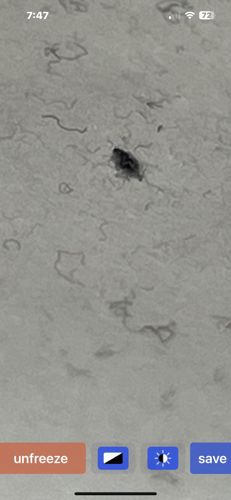Cockroach (likely German Cockroach or American Cockroach based on common indoor presence)
Scientific Name: Blattella germanica (German Cockroach) or Periplaneta americana (American Cockroach) are strong possibilities, but definitive identification from the image is difficult.
Order & Family: Order: Blattodea, Family: Blattidae (for American Cockroach) or Ectobiidae (for German Cockroach, among others)
Size: Varies by species. German cockroaches are typically 1.1-1.6 cm (0.43-0.63 in) long. American cockroaches are larger, ranging from 3.5-5 cm (1.4-2.0 in) long.

Natural Habitat
Commonly found in human dwellings, especially kitchens, bathrooms, basements, and any areas with food, water, and shelter. They thrive in warm, humid environments.
Diet & Feeding
Cockroaches are omnivorous scavengers. They will eat almost anything organic, including food scraps, decaying matter, starches, glues, hair, dead skin cells, and even wallpaper paste.
Behavior Patterns
They are nocturnal and often hide during the day in dark, damp places. They move very quickly when disturbed. Cockroaches undergo incomplete metamorphosis, passing through egg, nymph, and adult stages. Females lay egg cases (oothecae) containing multiple eggs.
Risks & Benefits
Risks: Can spread bacteria and pathogens (e.g., Salmonella, E. coli), trigger allergies and asthma attacks, contaminate food, and cause unpleasant odors. No significant benefits to humans in an indoor environment. In ecological contexts, they play a role in decomposition.
Identified on: 8/29/2025